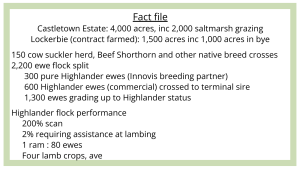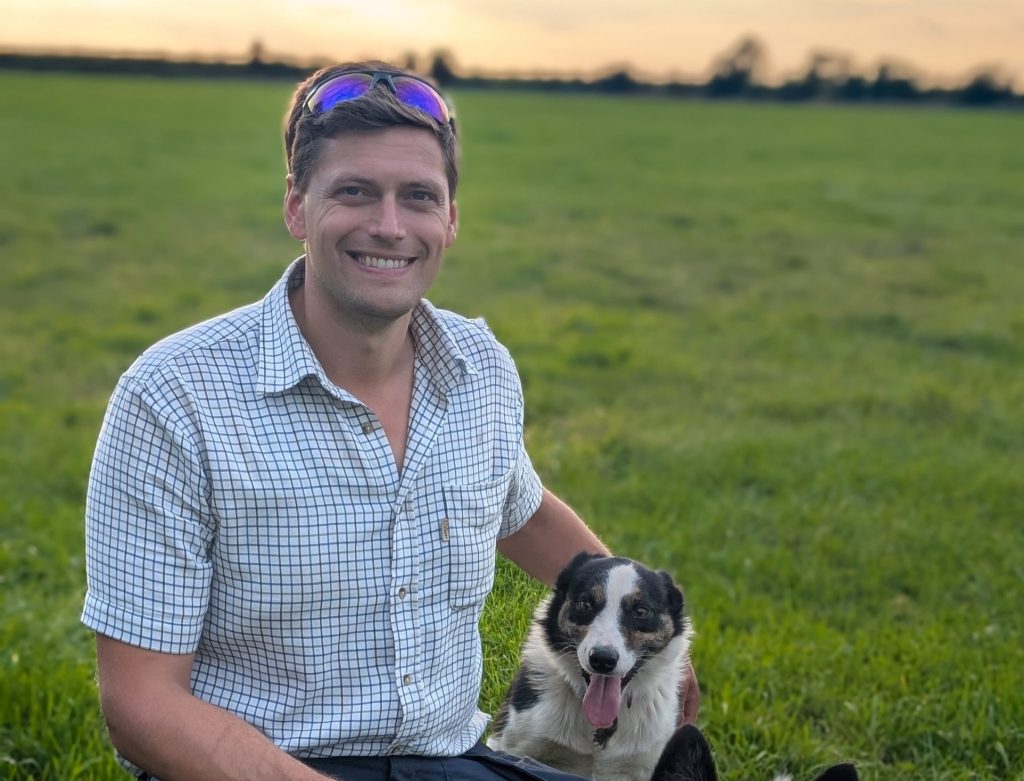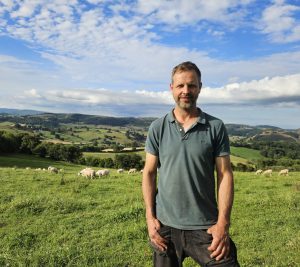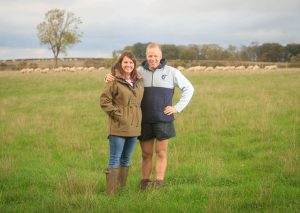with thanks to Ruari Martin, farm and estates director at Castletown Estates
Low input, high output – is the Holy Grail to developing a sustainable and profitable sheep enterprise, says Ruari Martin and over three years on after taking over the lead at Castletown Estates he is confident the search is off.
“Our goal was to develop a 1,000 to 1,500 ewe flock managed by one labour unit and maximise the number of lambs sold per ewe put to the tup from a mixed forage-based system, and after putting various performance recorded breeds to the test, the Highlander from Innovis won hands down.

“We found the Highlander ewes thrive grazing the in bye on our low lying hill unit at Lockerbie; they’re supplemented with winter forage crops, minerals and minimal concentrate. Outdoor lambing starts 1 April, virtually 100% lamb within the first three weeks and with minimal intervention – we check two or three times a day, while lambs have that vigour and the ewes great motherability.
“The majority of lambs are reaching 18-19kg off grass between July and September, with 95% within spec – performance that suits us, we’re about delivering volumes of supermarket lambs. Furthermore, the Highlander is a very prolific sheep, the breed delivers the numbers without traditional flushing.”
Castletown Estates used to stock Mules and Texel cross ewes touching on 100kg mature weight. “Our criteria was also for a smaller more efficient ewe around 60kg, one that could wean the same kilos of lamb, and retain herself in BCS 2.5 to 3.00, 365 on a forage based diet,” Ruari explains.
…the Highlander came out top in terms of maximising lambs sold per ewe put to the ram
“We ended up putting to the test a mix of Beulah cross, Easycare and Highlander together with Lleyn and Romney from performance recorded flocks. To keep track, we performance recorded them all and the Highlander came out top in terms of maximising lambs sold per ewe put to the ram; the breed is also injecting vigour into the lambs, something that’s vital lambing outdoors on a hill while still producing a decent finished lamb, consequently, we concluded it was the breed best suited to this unit and the one that could match our objectives. Added to the fact I had had previous experience working with Innovis genetics and I wanted to invest in a breed which is properly performance recorded, one that has an evidence base.
“Since the Highlander ticked all the boxes, we took the decision to disperse the existing indoor lambing flock and buy in 600 Highlander ewes in one big hit. Yes it was a big financial commitment but needed if we were to move the sheep enterprise forward. We also agreed to grade up the entire existing commercial flock to pure Highlander status over the next five plus years.” These commercial ewes are put to a variety of breeds to produce a uniform finished lamb, we’re yet to find one breed that does it all. Their weaned lambs shipped from Lockerbie to Castletown to finish on a mix of saltmarsh, new and old leys, stubble turnips and kale.
He continues: “We also agreed to become a Highlander breeding partner for Innovis. We took on an existing purebred flock and are continuing to performance record every ewe and select progeny for specific traits within the top 25% of the breed’s genetic pool. At the end of each season we are scheduled to have a volume of high performance rams for sale. We want them to stand out for health, performance and longevity in forage-based systems. The flock is proving to be an added value enterprise for Castletown and in turn it’s satisfying to have some influence on the industry’s future supply of genetics.”



